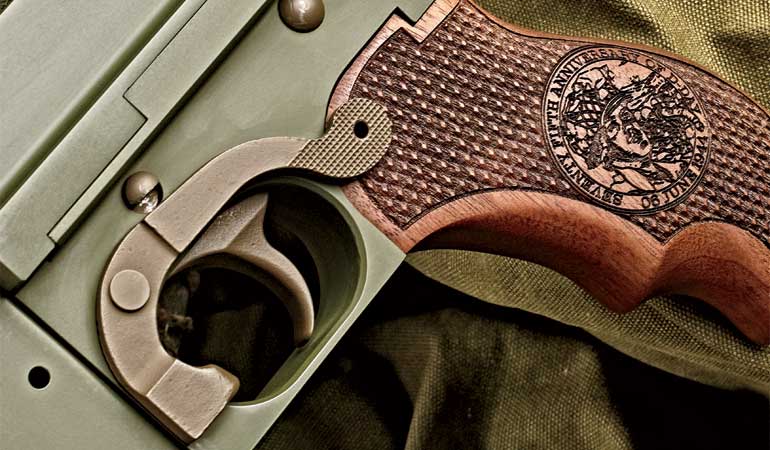

22 was build, which mass was 3 pounds and overall length 16 inches.32 and. Interestingly it also mentions about planned other cartridge options (page 10) at page, namely. All guns now released fire at this rate, with exception of the carbine and Navy version

But I am unable to say to which variant these data actually are belonging.Īt page 9 of pdf, states that the most effective fire rate, as determined experimentally and released as the “Model 1921-A” is the present standard of about 879 rounds per minute. General view drawing shows sub-machine gun without front grip, with muzzle brake-compensator, bolt handle sticking upwards and drum magazine described as drum magazine (for 100 cartridges), it is described as delayed-blowback and there is mention of element made from bronze, mass without magazine is given as 4,54 kg and Rate-of-Fire as 600 rpm. states that Maschinenpistole 760(e) which is Thompson used by British forces has cyclic Rate-of-Fire 500 rpm.Īuthors of Strelkovove orugie from 1947 (Soviet book describing most important foreign fire-arms) apparently failed in differentiating Thompson variants, and they describe “Thompson Sub-machine A-1 model 1928” with noticing that there exist “model 1921” which features front grip for left hand and lacking muzzle brake-compensator. What was Rate-of-Fire for each version? Modern firearms query gives ~700 rpm for both M1928 and M1 versions, English wikipedia query gives 800 rpm for M1921, 600 rpm for M1928, and 600-700 rpm for what it call United States Submachine Gun, Cal.45, M1 and 700-800 rpm for M1A1.
#AUTO ORDNANCE THOMPSON PROBLEMS SERIES#
This is the fourth in a 5-part series on the development of the Thompson… A further simplification would follow shortly, as the hammer and floating firing pin were replaced by a fixed firing pin milled into the bolt face in October of 1942 – this new type being designated the M1A1. Another 715,000 M1 and M1A1 Thompsons would be produced by Savage and Auto-Ordnance by February of 1944, when the Thompson was finally replaced by the yet cheaper M3 “Grease Gun”. In addition to greatly simplifying the production of bolt components, this also allowed the receiver internal shape to be much simplified. This new M1 Thompson had eliminated at last the unique and unnecessary Blish lock system in favor of a simple blowback action delayed only by bolt mass. Savage would transition from M1928A1 production to the new M1 pattern in June and July of 1942. In March of 1942, engineers at the Savage factory submitted a simplified version for Army consideration, and it was accepted and adopted the very next month. The Thompson was a very expensive gun, and the Army wanted to see that change. While the US Army was satisfied with the Thompson as a fighting weapon in World War Two, it was most certainly not happy with the gun’s exorbitant price tag. This Thompson is being sold by Morphys on October 30, 2018. Note that I refer to the M1A1 in this video as a transferrable gun it is actually a pre-May dealer sample.


 0 kommentar(er)
0 kommentar(er)
